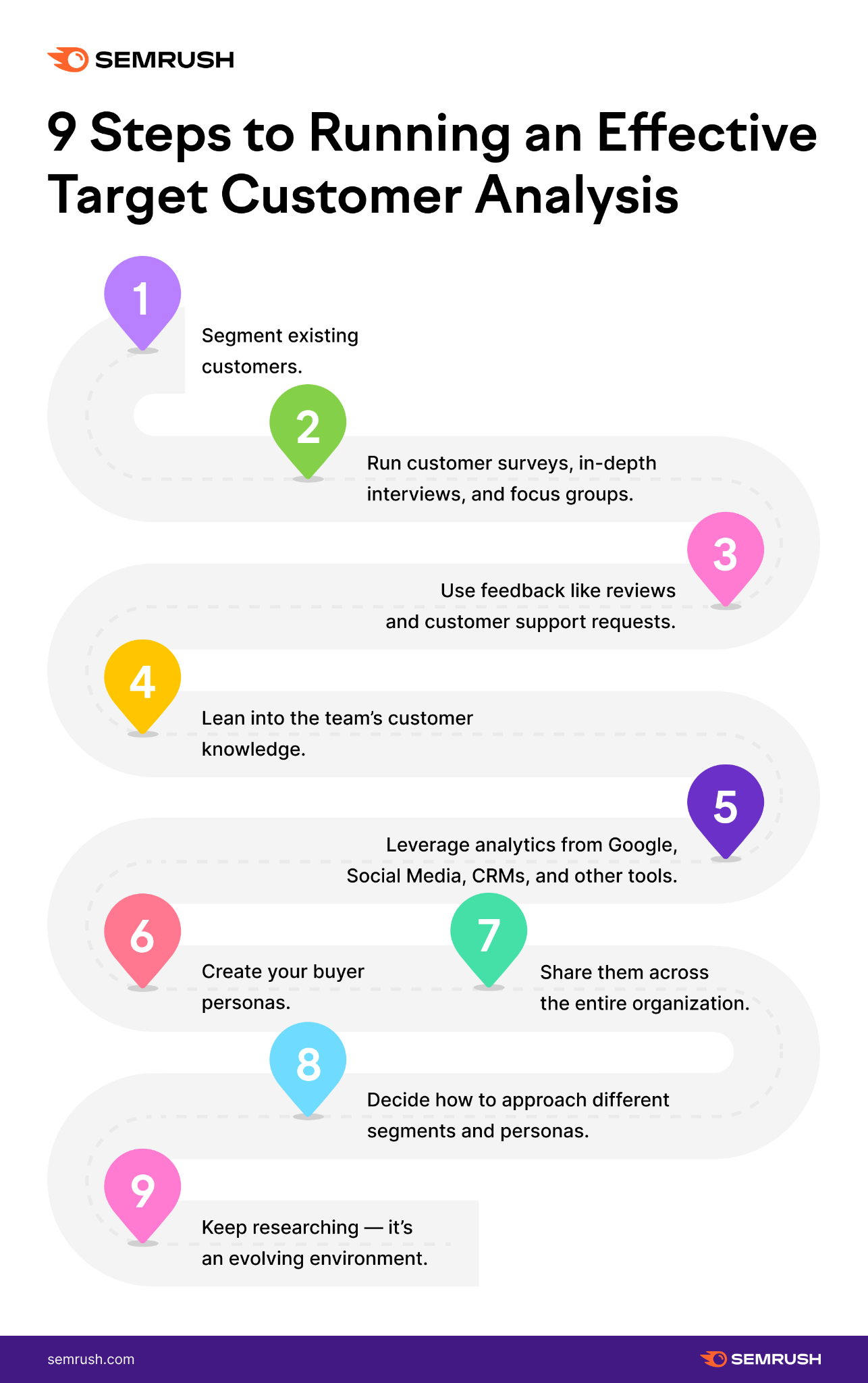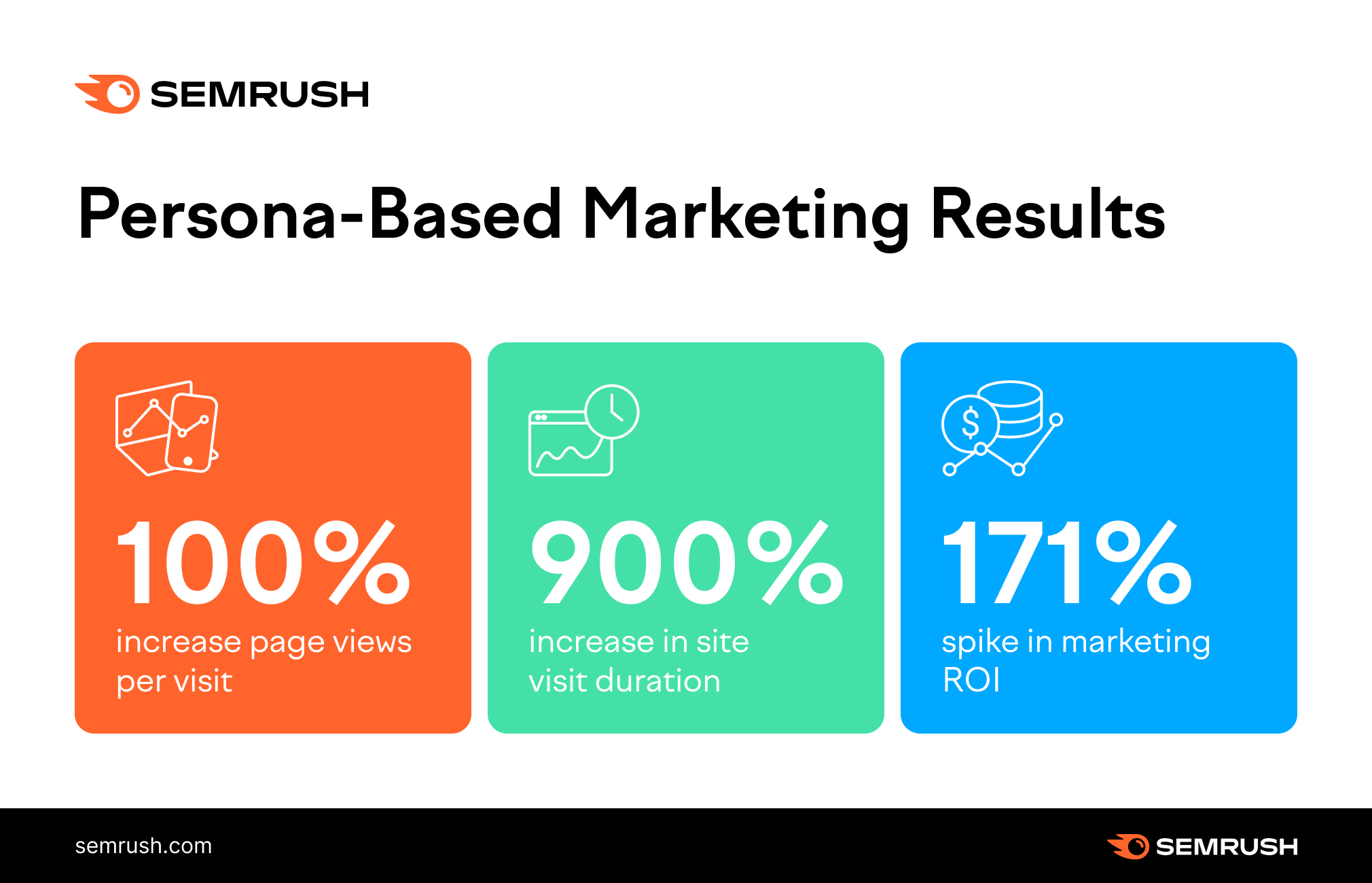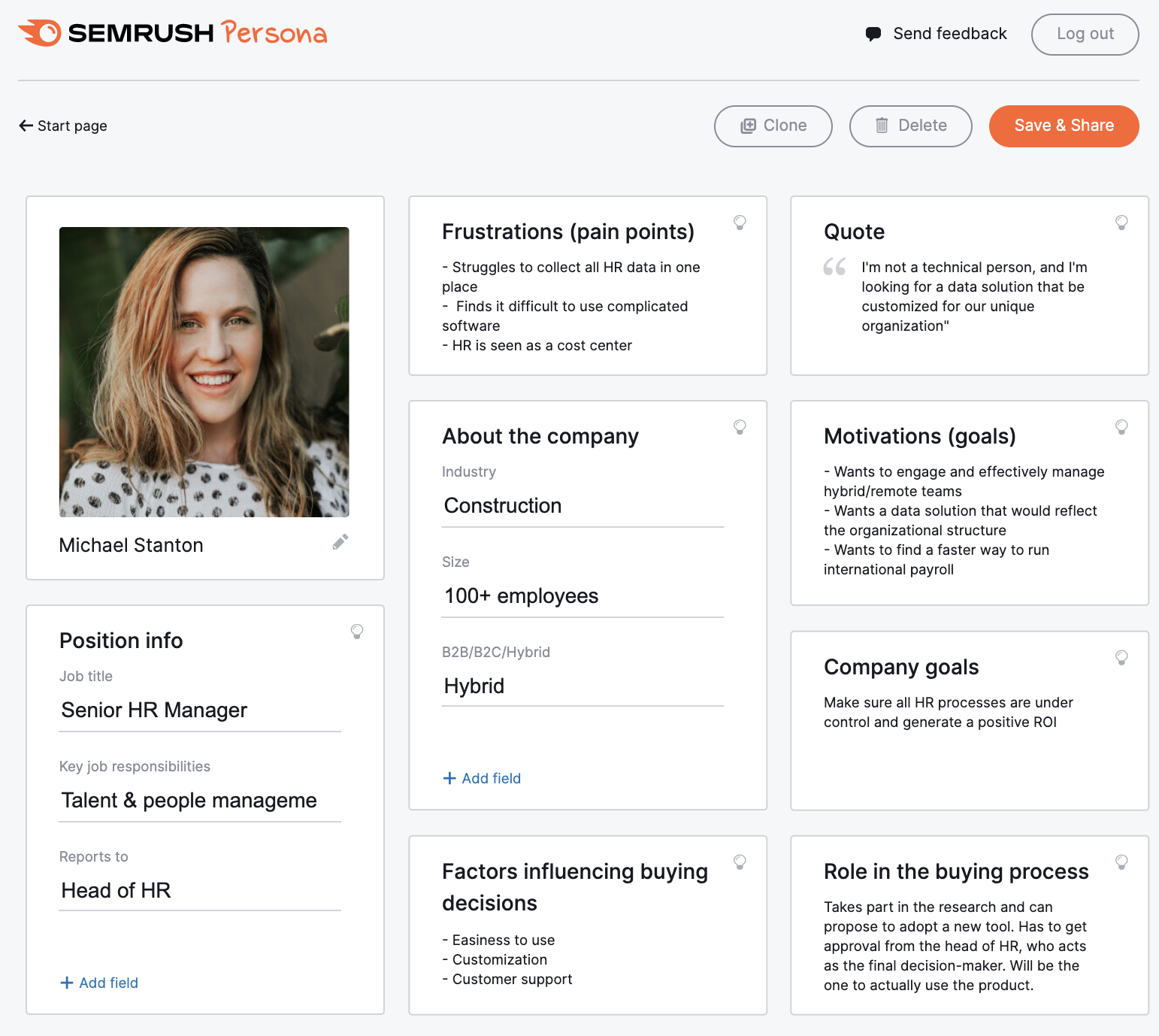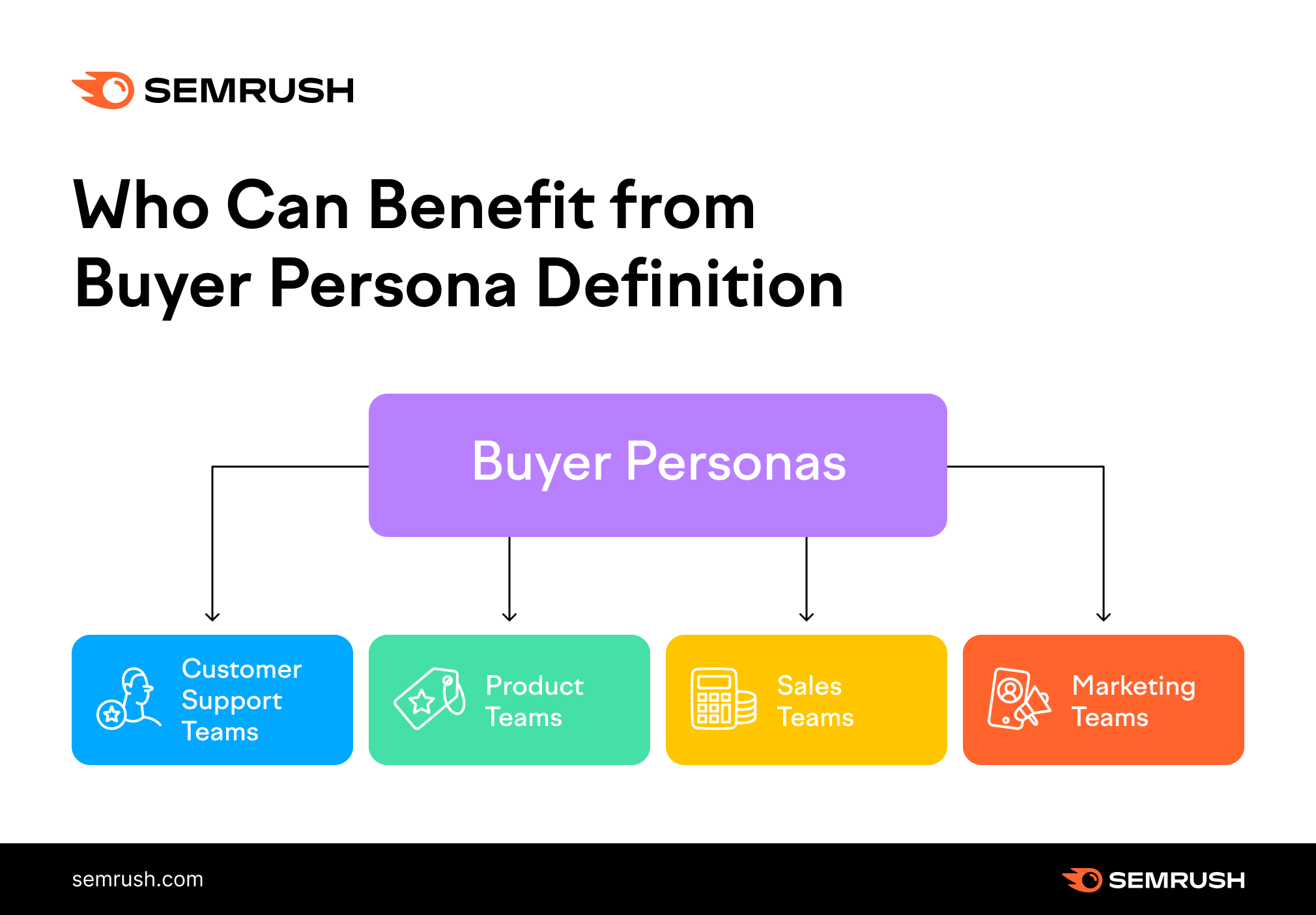One thing in business will never change: understanding your customers is the key to success.
However, for many organizations, real customer analysis is easier said than done. Sometimes, customer research only scratches the surface and focuses on unnecessary information. Other times, teams work in silos, and the research they’ve worked so hard to produce isn’t actually used across the organization or in their marketing campaigns.
Effective customer analysis is based on in-depth research, shared with the entire team, and focused on what really matters: customer pain points and goals — and insights on what influences their buying decisions.
In this guide, we’ll take you through how to do it step-by-step.
What Is Customer Analysis?
Customer analysis is the practice of using qualitative and quantitative data to gain insight into your customers. The goal is to understand their wants, needs, pain points, and objectives. At the same time, customer analysis helps us understand what drives people to make a purchase, how and when these purchases happen, the frequency of these purchases, and other relevant information.
Organizations that conduct customer-centric data analysis use research methods like focus groups, in-depth interviews, social media analytics, existing customer feedback — and more — to understand their customer base. In turn, this allows them to adapt their business processes to meet their customers’ real needs.
Why Is Customer Analysis Important?
Here are a few concrete reasons why you need to implement customer analysis, it:
Enables you to shape your communications and marketing to address customers’ goals (and really speak their ‘language’). Lets you better target customers through segmentation and increase ROI (otherwise known as targeted marketing). Helps you to define what marketing channels will reach customers best, and where to invest ad dollars. Helps you understand how to improve your products or services. Lets you build better relationships with clients and improve customer loyalty overall.What Is a Customer Profile?
A customer profile is a fictionalized description of your ideal client — the “perfect” fit for your business solutions. You may also have heard of buyer persona — a closely linked concept that describes a range of different types of client characteristics. It might include information on your customer’s demographics, professional status, purchasing habits, values and goals, influences, and challenges, and anything else that’s relevant to your particular situation. Overall, the main goal of customer analysis is to create a customer profile and a range of buyer personas.
Customer profiles and buyer personas are also made to be shared across the entire organization — including with the sales, design, marketing, and product teams. So, they need to be concise and easy to understand.
For example, your team might not need to know if your ideal customer likes strawberry ice cream, wears orange socks, and is a Sagittarius. These assumptions won’t help anyone make smarter business decisions. However, the real, in-depth insights we mention above will. Make sure to ask yourself (and your team) if the information you seek and include will have an impact on the way you are making decisions in the company.
9 Steps to Running an Effective Target Customer Analysis

So, how can you run an effective customer analysis? We’ve got you covered. Here are 9 steps you need to take.
1. Segment the Customers You Already Have
When you know what clients you already have, you can better understand what clients you would like to have. That’s why one of the first steps in your customer research involves customer-based segmentation (i.e. grouping your clients by certain characteristics).
Segmentation depends on the goals you have as a company. For example, you don't necessarily need to include demographics in a B2B scenario. Be sure to only include information that actually affects how you would market your product or service.
Brands often segment their customers into the following groups (but don’t feel like you need to stick to just these):
Geographic (countries, cities, urban or rural areas) Demographic (age, gender identity, religion, education, socio-economic type, etc.) Behavioral (how they interact with products and services, also known as customer behavior analysis) Media (where and how they consume media) Psychographic (opinions, interests, political leanings and beliefs) Benefit (what they value about a brand or service) Buying decisions (their role in the buying process, perceived barriers, decision criteria, perceived benefits)You can get some of this information from social media, your CRM (customer relationship management) tool, paid campaigns, market research, and other data sources. For example, the Semrush Market Explorer tool can give you insight into market demographics in your sector: interests, social media consumption, and more.
But, there’s probably nothing more effective than taking the time to speak with your customers in depth, especially if you offer a high-consideration product or service. This will allow you to ask follow-up questions, get an in-depth understanding of your clients’ needs — and get to know them on a more emotional level. These are all things we go into below.
2. Talk to Customers to Find Out what Makes Them Tick
You can invest hours researching online. However, it’s not until you speak to customers that you’ll understand their true sentiments.
To conduct effective customer analysis, you need to invest the time in carrying out focus groups, surveys and in-depth interviews with clients and potential customers.
There are two principal types of research you can employ:
Quantitative Research
Quantitative research involves finding data. It can come from surveys, but also analytics harvested from your website, app, ecommerce store, third-party sites, CRM, etc. Statistics derived from your clients and target market can help segment audiences, predict trends, and help analysts uncover insights to make smart business decisions. This usually informs future qualitative market research, because from here you can better decide which questions to ask your target audience. It’s also useful when you want to run an initial segmentation analysis, requiring statistically significant results.
Qualitative Research
Qualitative research involves finding your target market’s opinions. You can do this in in-depth interviews and focus groups, among other formats. Insights from qualitative research can help you uncover people’s motivations, challenges, opinions, etc. They also allow you to connect with your customers on a different level and ask follow-up questions, helping you to truly understand who they are. This is especially crucial for high-consideration products (e.g., in B2B markets), where the decision-making process can become complicated and take unexpected shapes.
With these, you shouldn’t just be digging around for bits of random information. On the contrary, before you approach anyone, you need to understand what your end goal is. What do you want to find out?
But no matter how you’re reaching customers — through focus groups, surveys or interviews — it’s wise to keep the scope of things tight. That is, don’t try to learn everything about how your customers feel in one sitting; you’ll get more actionable information if you delve deeply into just one topic.
Customer analysis is meant to be an ongoing process, so you’ll always have time to learn more as you continue on the journey. Plus, by only digging into one topic, you’re more likely to encounter information about how people perceive your brand that you didn’t expect to find (and that’s always the best kind).
3. Use Existing Customer Feedback
Customers already reach out to you when they need help, are happy with your product, or want to make a complaint. Paying attention to all this existing customer feedback and customer support requests can be incredibly valuable when it comes to understanding client pain points and goals. This is also called Voice of Customer (VoC) analysis.
Voice of Customer programs can help you analyze customer reviews on Google, Facebook, Twitter, the App Store, Google Play or any other public source will enable you to see where your brand goes right and wrong. Besides, tools like Semrush Brand Monitoring can help you keep track of all mentions of your brand and product/service in real-time.
In many cases, VoC data will give you insights into how your customers speak, write and even think. For example, why exactly did they ask for a refund? What features were they unhappy with, but didn’t think were worth requesting a refund over? In what surprising ways has your product been useful for them or someone they know?
4. Communicate with Your Team
Everyone on your team may work for the same organization, but not everyone sees the same side of clients — and therefore what makes them tick. For example:
The marketing team might understand what style of copy leads clients to book an initial call. While the sales team might understand what makes customers ultimately convert. Account managers might understand what makes customers happy day in, day out. But customer success managers (CSMs) might know how to go the extra mile to retain them.Compiling insights about customers as a team can be incredibly powerful, and enables a holistic approach to client analysis. One way to do this, for instance, is for marketers to take part in sales or CSM calls to get a better understanding of the users — and vice versa.
Doing so can also be useful for teams in which not everyone works with the same clients; for example, when it comes to working with large B2B accounts or clients from specific sectors.
5. Leverage Analytics
Analytics can provide incredible insight into customers and their behavior. If you use a customer relationship management tool, you may already have internal information about customer demographics and behavior, client profitability and value, as well as conversations with customers at your fingertips.
Google Analytics and Facebook Audience Insights (for example) can also be extremely useful. They let you learn more about how customers interact with your website and social accounts.
For example, you can see:
How your site visitors found you The typical customer journey (where people enter and leave your website) How long they stay on a particular page and what percentage leave immediately The links your visitors click, etc.In turn, you can understand more about their habits, interests, and behaviors.
There are other tools generating analytics for specific marketing areas. For example, ImpactHero is an advanced (AI) content analytics tool that helps you identify areas to improve in your content marketing, using a tracking code to scan and highlight content funnel issues and website pages to enhance.
6. Create Buyer Personas
Now, it’s time to put these research findings into action. Semrush’s Head of Marketing (Market Research) Natalia Zhukova explains well how this fits into the analysis workflow in her post on buyer personas. She writes:
Amalgamating all of the data will help to identify patterns and similarities from interview answers, sales team feedback, and competitor insights. And from these commonalities, a buyer persona’s portrait should become clear — all that’s left to do is to document all the findings and share these personas with the rest of the company.
Natalia Zhukova, Semrush’s Head of Marketing (Market Research)
According to a NetProspex case study, their buyer persona marketing efforts resulted in a 900% increase in website visit duration and a 171% increase in marketing-generated ROI.

So, what should the persona look like? We recommend including the following:
Demographic information*, such as:
Age Location Gender identity (optional) Family status Education level Income level*More relevant to B2C
Professional information*, such as:
Job title Job responsibilities Who they report to Who are their subordinates Information about their company (size, revenue, etc.)*More relevant to B2B
Also include their:
Frustrations (pain points) Factors influencing buying decisions Their expectations from your product/service Preferred communication channels Preferred content types and formats Known/preferred brands and influencersYou may also like to include:
Jobs to be Done: The job your buyers want to get done when purchasing a product or a service Feedback on my product/service: Useful for dealing with objections and for future improvements What gets them to click “buy now”? (for example) What stops them from purchasing? What criteria are they using to compare providers?Using the Buyer Persona Templates
The free Semrush Buyer Persona Template tool helps you make sure all the information you include is as helpful and usable for your organization as possible. The ready-made templates or customizable personas also help speed up the process of collating all your information.
 Here’s how a buyer persona profile created in the Semrush Persona tool can look like
Here’s how a buyer persona profile created in the Semrush Persona tool can look likeOverall, it’s a quick and effective way to organize your personas into an easy-to-read and share format.
How to use the Buyer Persona Templates:
Make sure to conduct customer research using the quantitative and qualitative methods we discussed earlier. Categorize the insights you’ve collected. Running a segmentation analysis and deciding on the criteria to distinguish segments or personas might be helpful. Use the free Semrush tool to create each persona: choose one of the templates (e.g., the B2B Persona Template) and feel free to change anything in it, adding and removing fields as needed. Save your personas and make sure to share them with the rest of your team.7. Use the Customer Analysis Results and Your Personas Across the Entire Company

Your customer analysis and buyer personas won’t be very valuable if only used by a few select people at your organization. They need to be leveraged across the entire company, and this will enable you to keep your messaging consistent and effective.
We recommend getting buy-in and collaboration from every strategic and customer-facing department when creating these personas. Once completed, it’s worth holding an all-hands meeting — or individual department workshops — to share the personas, describing how they can be used.
At the same time, give each team’s head an objective to begin incorporating the insights you have uncovered in the research. Be sure to follow up on these and consistently update the personas with fresh information from each department as it becomes available.
Now, let’s take a look at how buyer personas can be valuable to different teams:
Sales teams use them to boost conversions and build better customer relationships from the start. Marketers use them to shape content marketing strategies and marketing plans — including how content is positioned and on what channel. Product managers and developers use them to define new product features and improve existing ones. Design teams use them to create web pages and graphics that resonate with customers, as well as to develop intuitive user interfaces (UI) and improve user experience (UX).Organizations re-brand all the time because their messaging or design doesn’t attract the customers they want/doesn’t reflect the reality of their actual customer base. For example, Old Spice was viewed as old-fashioned until the brand partnered with NFL Player Isaiah Mustafa, who spoke in snappy sentences in popular and quirky TV commercials while topless. Buyer personas help you ensure that your messaging, brand, and, most importantly — your product — are actually tailored to the real customers you want to attract.
8. Based on the Research, Decide which Segments and Personas Should Be Your Focus
Now, the big question is: how should you decide which personas your brand should focus on?
Perhaps the most important metric to focus on is Customer Lifetime Value (LTV) — which is the average value a customer brings to your organization throughout the entire relationship. The buyer personas that increase your LTV, over time, are ones that would be smart to focus on.
It can also help to have a unique customer journey map for each persona. This map will determine how to attract, engage, convert and upsell specific personas and segments based on their challenges, questions, preferred platforms, and types of content at every step of the way.
Use your personas — and these customer journey maps — to determine the following:
The best channels to advertise on and deliver content through Which selling point or differentiator to focus on The right calls to action The best influencers to useDownload the Free Content Mapping Template Kit that includes a Buyer's Journey Map Template
9. Remember that This Is an Evolving Environment
Customers are constantly changing. Since the start of the pandemic, many people’s preferred communication platforms have changed. Their demographics have changed, too; lots of people have moved out of cities and into the suburbs.
Even more, people’s values have changed. For many, spending time with family and friends has become more important than working long hours or going after a big promotion.
In this evolving environment, collecting customer feedback is key. And you should undertake customer segmentation analysis and voice of customer analysis periodically to ensure your research and buyer personas are up to date. Otherwise, your messaging, marketing, pitches, and (even worse) products risk becoming stale.
Unique Customer Data Analysis Examples
We’ve gone through how to carry out customer analysis. But keep in mind, your customers don’t just need to be segmented into typical market segments based on geography, demographics, or behavior. Your business is unique, and, in turn, there are a number of unique ways to target clients. Here are some customer analysis examples:
This Survicate blog outlines a few cool things companies have done. For example, the brand TravelFreak segmented customers based on the number of places they’ve visited, travel budget and distance traveled. Another brand, chatbot company Tidio, segmented customers based on the products they use, such as Shopify and WordPress (and then saw one blog convert at nearly 50%).
The moral of the story? With customer analysis, it can pay off to color outside the lines — and be creative to find what works best for your particular brand.
Conclusion
Customer analysis is arguably one of the most important things you can do for your business. When done right, it’s felt through every single element of your operations, and impacts everything from your marketing messaging, sales pitch, product features — right down to your customer loyalty and retention.
Want to get started? Learn how to consolidate your customer research with our buyer persona templates.
Innovative SEO services
SEO is a patience game; no secret there. We`ll work with you to develop a Search strategy focused on producing increased traffic rankings in as early as 3-months.
A proven Allinclusive. SEO services for measuring, executing, and optimizing for Search Engine success. We say what we do and do what we say.
Our company as Semrush Agency Partner has designed a search engine optimization service that is both ethical and result-driven. We use the latest tools, strategies, and trends to help you move up in the search engines for the right keywords to get noticed by the right audience.
Today, you can schedule a Discovery call with us about your company needs.
Source:





